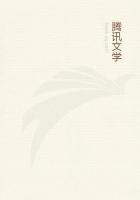I am advised by my publishers that this book is to be included in their catalogue of humorous publications, and this friendly warning gives me an opportunity to say that however humorous it may be in effect, its intention is perfectly serious; and, even if it were otherwise, it seems to me that a volume written wholly in dialect must have its solemn, not to say melancholy, features. With respect to the Folk-Lore scenes, my purpose has been to preserve the legends themselves in their original simplicity, and to wed them permanently to the quaint dialect-if, indeed, it can be called a dialect-through the medium of which they have become a part of the domestic history of every Southern family; and I have endeavored to give to the whole a genuine flavor of the old plantation.
Each legend has its variants, but in every instance I have retained that particular version which seemed to me to be the most characteristic, and have given it without embellishment and without exaggeration.
The dialect, it will be observed, is wholly different from that of the Hon. Pompey Smash and his literary descendants, and different also from the intolerable misrepresentations of the minstrel stage, but it is at least phonetically genuine. Nevertheless, if the language of Uncle Remus fails to give vivid hints of the really poetic imagination of the negro; if it fails to embody the quaint and homely humor which was his most prominent characteristic; if it does not suggest a certain picturesque sensitiveness-a curious exaltation of mind and temperament not to be defined by words -then I have reproduced the form of the dialect merely, and not the essence, and my attempt may be accounted a failure. At any rate, I trust I have been successful in presenting what must be, at least to a large portion of American readers, a new and by no means unattractive phase of negro character-a phase which may be considered a curiously sympathetic supplement to Mrs. Stowe's wonderful defense of slavery as it existed in the South. Mrs.
Stowe, let me hasten to say, attacked the possibilities of slavery with all the eloquence of genius; but the same genius painted the portrait of the Southern slave-owner, and defended him.
A number of the plantation legends originally appeared in the columns of a daily newspaper-The Atlanta Constitution and in that shape they attracted the attention of various gentlemen who were kind enough to suggest that they would prove to be valuable contributions to myth-literature. It is but fair to say that ethnological considerations formed no part of the undertaking which has resulted in the publication of this volume. Professor J.
W. Powell, of the Smithsonian Institution, who is engaged in an investigation of the mythology of the North American Indians, informs me that some of Uncle Remus's stories appear in a number of different languages, and in various modified forms, among the Indians; and he is of the opinion that they are borrowed by the negroes from the red-men. But this, to say the least, is extremely doubtful, since another investigator (Mr. Herbert H. Smith, author of Brazil and the Amazons) has met with some of these stories among tribes of South American Indians, and one in particular he has traced to India, and as far east as Siam. Mr. Smith has been kind enough to send me the proof-sheets of his chapter on The Myths and Folk-Lore of the Amazonian Indians, in which he reproduces some of the stories which he gathered while exploring the Amazons.
In the first of his series, a tortoise falls from a tree upon the head of a jaguar and kills him; in one of Uncle Remus's stories, the terrapin falls from a shelf in Miss Meadows's house and stuns the fox, so that the latter fails to catch the rabbit. In the next, a jaguar catches a tortoise by the hind-leg as he is disappearing in his hole; but the tortoise convinces him he is holding a root, and so escapes;
Uncle Remus tells how the fox endeavored to drown the terrapin, but turned him loose because the terrapin declared his tail to be only a stump-root. Mr. Smith also gives the story of how the tortoise outran the deer, which is identical as to incident with Uncle Remus's story of how Brer Tarrypin outran Brer Rabbit.
Then there is the story of how the tortoise pretended that he was stronger than the tapir. He tells the latter he can drag him into the sea, but the tapir retorts that he will pull the tortoise into the forest and kill him besides. The tortoise thereupon gets a vine-stem, ties one end around the body of the tapir, and goes to the sea, where he ties the other end to the tail of a whale. He then goes into the wood, midway between them both, and gives the vine a shake as a signal for the pulling to begin. The struggle between the whale and tapir goes on until each thinks the tortoise is the strongest of animals. Compare this with the story of the terrapin's contest with the bear, in which Miss Meadows's bed-cord is used instead of a vine-stem. One of the most characteristic of Uncle Remus's stories is that in which the rabbit proves to Miss Meadows and the girls that the fox is his riding-horse. This is almost identical with a story quoted by Mr. Smith, where the jaguar is about to marry the deer's daughter. The cotia-a species of rodent-is also in love with her, and he tells the deer that he can make a riding-horse of the jaguar.













